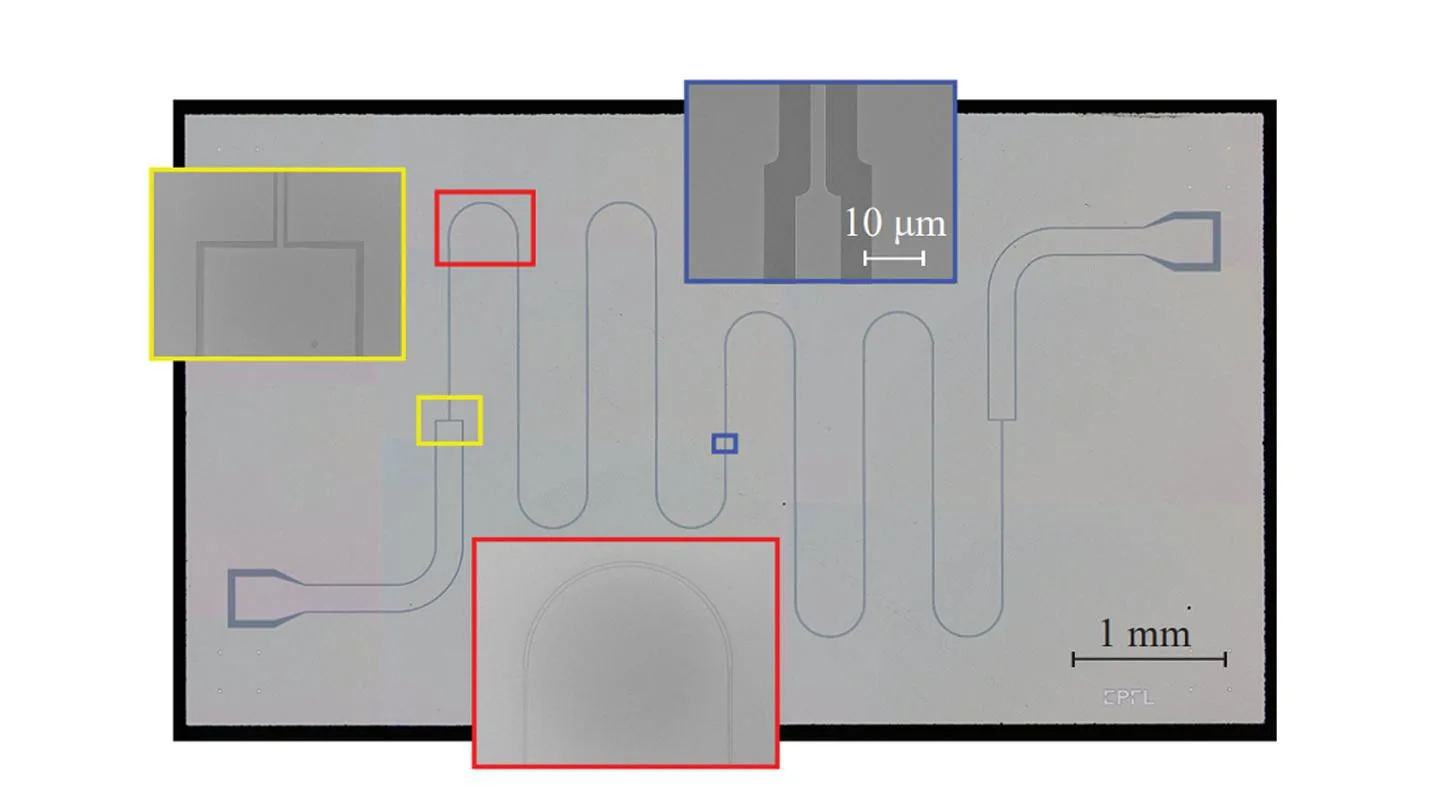Scientists at EPFL’s Hybrid Quantum Circuits Laboratory have developed a Kinetic Inductance-based Parametric Amplifier (KIPA), a significant advancement in quantum signal amplification. This technology could enhance quantum sensors for various applications and fundamental physics. The KIPA, led by Dr. Simone Frasca and Professor Pasquale Scarlino, offers quantum-limited amplification and functions reliably under high magnetic fields and temperatures. This resilience makes it a valuable tool for quantum computing and sensing, especially for applications reliant on magnetic fields. The team plans to expand the KIPA’s bandwidth and integrate it into a readout chain for a fast, high-fidelity readout of spin qubits.
Quantum Signal Amplification: A Leap Forward with KIPA
Researchers from the Hybrid Quantum Circuits Laboratory at EPFL have made significant strides in the field of quantum signal amplification. They have designed, fabricated, and tested a Kinetic Inductance-based Parametric Amplifier (KIPA), a tool that could potentially revolutionize quantum sensors for technological applications and fundamental physics. This development is a crucial step towards achieving “tabletop precision physics”.
Quantum technology relies heavily on extremely weak signals that carry valuable information about quantum phenomena. These signals are so faint that they are often drowned out by the intrinsic noise of typical measurement electronics. This is where the role of a parametric amplifier becomes crucial.
The Role of Parametric Amplification in Quantum Technology
Parametric amplification can be likened to a child on a swing, who by strategically moving their legs to the rhythm of their swing, subtly alters its natural frequency. By synchronizing these leg movements at precisely double the swing’s frequency, the child propels themselves higher—a perfect example of resonance and amplification.
In quantum technology, parametric amplifiers play a vital role in enhancing weak quantum signals while minimizing added noise, in line with the principles of quantum mechanics. This enhancement is achieved through a coherent exchange of photons between two tones of differing frequencies within a nonlinear medium.
Limitations of Josephson Junction-based Parametric Amplifiers
Traditionally, parametric amplifiers have relied on Josephson junctions, small superconducting devices with powerful nonlinear properties. However, these devices have significant limitations. They struggle with high-power signals, require operation at extremely low temperatures (around 10 mK), and are highly sensitive to magnetic fields, which can lead to potential malfunctions.
The presence of a magnetic field significantly affects the performance of Josephson junctions, limiting their compatibility with other quantum technologies, such as spin qubits and quantum memories, which heavily rely on external magnetic fields for operation. This sensitivity poses challenges in integrating Josephson junction amplifiers onto chips very close to the quantum device, which could otherwise reduce losses in transmission.
KIPA: A Resilient Tool for Quantum Signal Amplification
To overcome these challenges, Dr. Simone Frasca and his team from the Hybrid Quantum Circuits Laboratory, under the guidance of Professor Pasquale Scarlino, implemented a Kinetic Inductance-based Parametric Amplifier (KIPA). This innovation utilizes the inherent nonlinearity found in “dirty” thin superconducting films, departing from previous limitations.
The KIPA offers quantum-limited amplification with a remarkable gain-bandwidth product of 20 MHz, peak gains exceeding 40 dB, and a saturation power of -65 dBm—three orders of magnitude higher than conventional Josephson Parametric Amplifiers.
Most notably, the KIPA demonstrates remarkable resilience, functioning reliably under magnetic fields of up to 6 Tesla and temperatures as high as 850 mK. This magnetic field compatibility and quantum-limited noise performance position it as an invaluable tool for quantum computing and sensing researchers, particularly for applications reliant on magnetic fields, such as hole/electron-based spin qubits and spin-ensemble quantum memories.
Future Prospects of KIPA in Quantum Technology
Moving forward, the team aims to expand the bandwidth of the KIPA and integrate it into a readout chain to enable fast, high-fidelity readout of spin qubits. This development could potentially revolutionize the field of quantum technology, making it more efficient and reliable. The research, published in Physical Review Applied and selected as an Editor’s Suggestion, is a testament to the potential of KIPA in quantum signal amplification.

